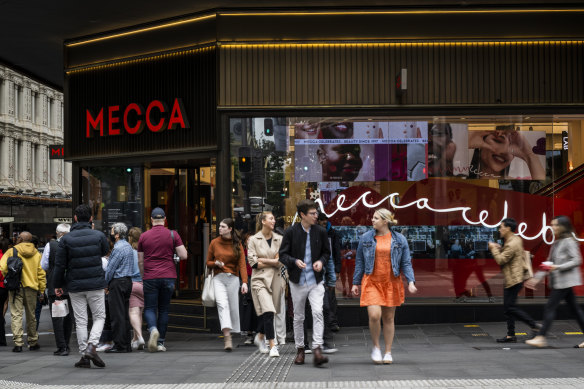He is clearly looking for “belt and braces” to ensure that the peak of inflation will be felt in the December quarter and not drag on into next year.
In “economist speak”, the statement from the RBA will be viewed as less “hawkish” than previous statements. In layman’s terms, it was less strident about the need for further interest rate rises, which suggests there may not be too many more.
He is clearly looking for “belt and braces” to ensure that the peak of inflation will be felt in the December quarter and not drag on into next year.
But there is plenty of room for interpretation by economists.
The RBA closed its remarks with a comment that it “remained resolute in its determination” to return inflation to the target range of between 2 per cent and 3 per cent. And it expects to increase rates further to achieve that outcome given inflation is sitting at 6.9 per cent.
The question of how many rate rises are left before we hit the end of this tightening cycle, and when this will be, is now what the market and economists will obsess over in the coming weeks.
The rapid-fire rate rises have taken the cash rate to 3.1 per cent from 0.1 per cent in seven months. Under normal circumstances this should have been enough to cut inflation off at the knees. But these economic conditions are unusual.
In the first instance, many Australians have borrowed at very low fixed interest rates. And the lion’s share of these rates don’t roll off until next year and some won’t require renegotiation until 2024.

Household spending has so far been resilient in the face of rising interest rates and high inflation.Credit:Louise Kennerley
Those borrowers are not feeling the pain of higher rates and can continue to consume goods and services accordingly. This explains why spending has remained stubbornly high, despite the rising costs of goods and services.
The direct impact of rising rates has been clear. Already this year home values have fallen nationally by more than 6 per cent. Sydney home values are down 10.2 per cent since peaking in January and Melbourne values are down 6.4 per cent since February.
Loading
The RBA says household spending is expected to slow over the period ahead although the timing and extent of this slowdown is uncertain.
It also acknowledges that much of the inflationary pressure Australians are feeling has been imported. There is nothing the RBA can do about that or the deteriorating international economy.
It can only tread the narrow path of attempting to tame inflation and keep the local economy growing. If successful, this will be Lowe’s Christmas present.
Stay connected with us on social media platform for instant update click here to join our Twitter, & Facebook
We are now on Telegram. Click here to join our channel (@TechiUpdate) and stay updated with the latest Technology headlines.
For all the latest Business News Click Here
For the latest news and updates, follow us on Google News.
